Elizabeth II: A queen for a pop century
Cheap trinkets, expensive works of art and the Sex Pistols’ punk version of the national anthem; the queen popped up in every corner of popular culture
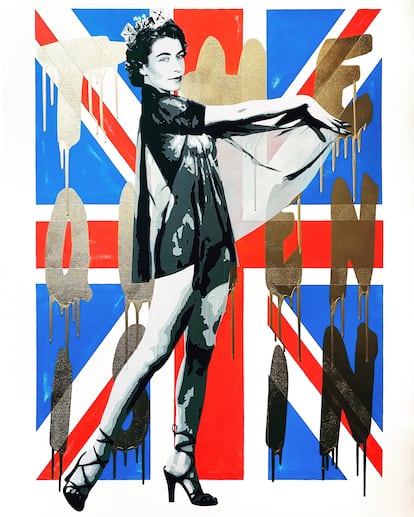

On April 29, 1929, a three-year-old girl with a yellow dress and bored look on her face was on the cover of Time magazine. The caption underneath read, “P’incess Lilybet,” imitating the little girl’s childish pronunciation of her own name. The story inside began with a rather grim discussion of the three men who had to die before the birthday girl could become queen (her grandfather, uncle and father). But the story ended on a very different note, describing the children’s clothing section of the Selfridge department store in London. “We used to only have pink, blue and white,” said a salesclerk, “but now almost every mother wants to buy a pale yellow dress or hat like Princess Elizabeth’s.”
That little girl ended up reigning for 70 years. Her love of “primrose yellow” dresses endured, and she even wore the color on her 90th birthday and at William and Kate’s wedding. It is one of the shades that appear in the Pantone Queen color guide, a limited edition of the familiar fan-shaped color sampler with the queen’s silhouette (coat, hat and ever-present Launer handbag) in light blue, coral, lilac, pistachio… Like millions of objects inspired by Her Majesty – from cheap souvenirs to expensive works of art – the Pantone color guide exudes an innocuous and immediately recognizable sense of humor. All these queen-inspired objects were expressions of a pop culture that was born and flourished in the 20th century – the queen’s century – while the concept of monarchy slowly became obsolete.
Elizabeth II became an iconic figure who ranged across all social strata, from high culture to kitsch. The ubiquitous Solar Queen, a tongue-in-cheek toy figurine that performs the royal wave, illustrates the cover of Royal Fever: The British Monarchy in Consumer Culture. Pauline Maclaran, one of the book’s authors, chose it because it “exemplifies the magnitude of the culture industry around the royals: there is a market for everything, even the most absurd.”
“The queen is a brand,” said Maclaran, a University of London professor, via videoconference. “As the longest-reigning monarch in history, she has represented stability in a changing world and her appearance reinforced that image. She was never a fashion victim like her sister Margaret or Lady Di. Her sober outfits in cozy pastel colors represented her values rather than her personality.” Maclaran says the queen knew how to maintain a certain “mystique,” and never became “… a celebrity like some of her relatives. She always stayed above it all. Even people who don’t support the monarchy admit that she never did anything improper. She was someone you could count on who was simply always there, unflappable.” Christina Jordan, the editor of a collection of essays titled Realms of Royalty, says Elizabeth II’s face “… literally represents the monarchy in popular culture and everyday life. It’s on stamps, coins, souvenirs… but also in Andy Warhol paintings and iconoclastic Sex Pistols album art.”
The most portrayed woman in history
The director of the National Portrait Gallery once said that the queen was “the most portrayed woman in history.” In that museum alone, there are 967 photos and paintings of Elizabeth II, many of them by official royal photographers. In the 1950s, she posed for Cecil Beaton draped in ermine and royal jewels, and for Dorothy Wilding she wore an elegant and romantic ballroom gown. In the 1970s, Patrick Lichfield was allowed to photograph the queen in more informal settings – laughing, sailing and strolling with her dogs through the countryside.
Buckingham Palace commissioned around 200 portraits from artists like Pietro Annigoni, who painted her with an introspective expression on her face. “I didn’t want to paint her looking like a movie star,” he said, “but like a monarch burdened by the weight of responsibility.” Elizabeth II adapted to the times and posed for Annie Leibovitz at home in Windsor Castle, for Justin Mortimer (who portrayed the queen with her head floating above her body), for holographic artist Chris Levine and for Lucien Freud. The 2001 Freud portrait was controversial – some critics consider it her best portrait for its unrefined simplicity, while others said it made her face resemble one of her dogs. The queen, according to her biographer, simply thanked Freud for his work and said, “I enjoyed watching him mix the colors.”
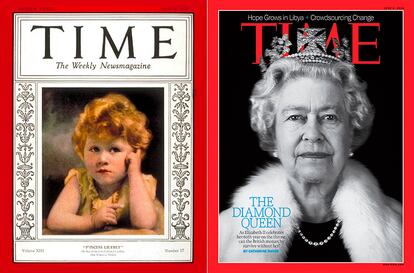

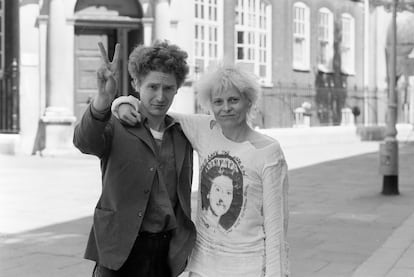
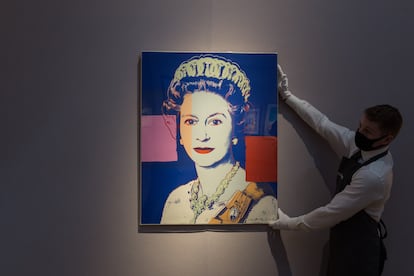


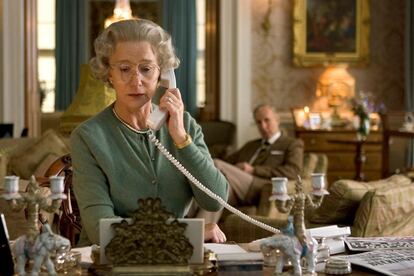
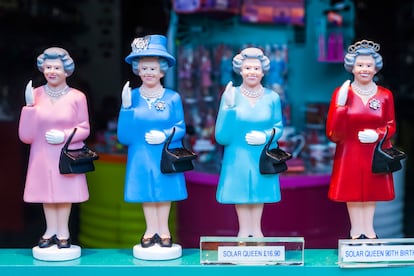
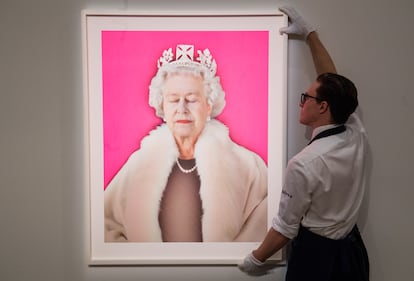
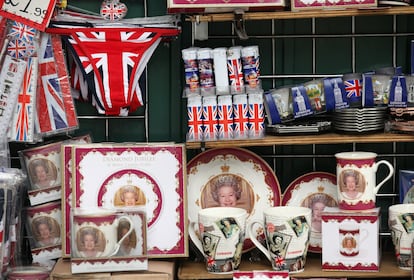
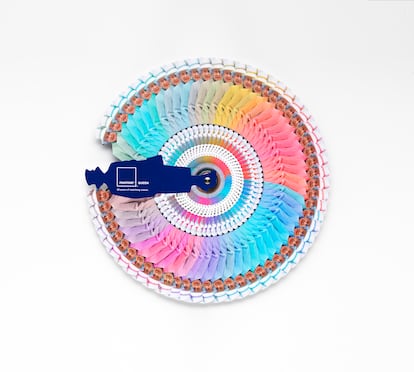

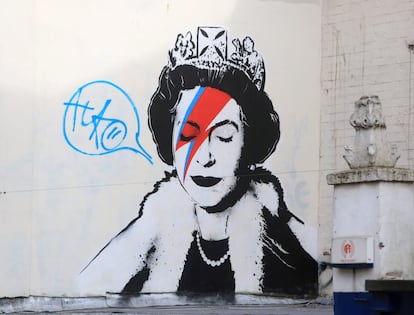
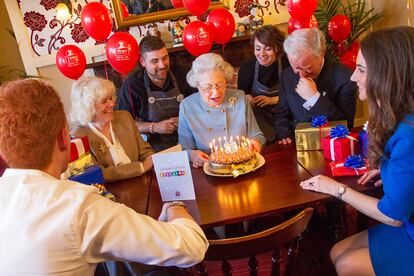
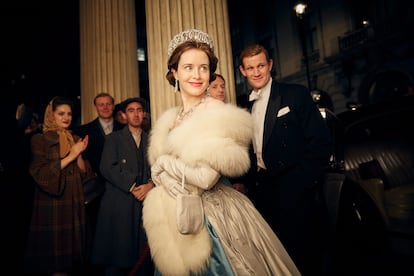
Royal watchers and experts say the queen’s characteristic restraint contributed in large measure to her status as a cultural icon. “We know very little about her opinions and personality. She never opened up and always spoke from the crown. There was little to make fun of, unlike Prince Charles,” said Maclaran, whose favorite depiction of the monarch is the puppet made for the satirical Spitting Image British TV show. Even unofficial portraits like the Banksy street mural with the Ziggy Stardust lightning bolt streaking across her face, or Alison Jackson’s fake selfies of a queen doppelganger taking playful photos with her family or sitting on the toilet, treat the queen with benign respect.
“The Royal Household’s careful handling of her private affairs also contributed to the queen’s iconic image,” said Jordan. “Much is known about Diana’s life, and Harry and Meghan, but the queen was much more private, which piqued everyone’s curiosity and obliged the culture industry to get creative.” Films like The Queen and The Crown TV series on Netflix filled “that void with imagination and sentiment that dazzled audiences.”
Graffiti and punk
In the mid-1980s, Andy Warhol, who once said he wanted to be “more famous than the Queen of England,” produced a colorful series of silkscreen prints of Elizabeth II similar to his famous prints of Marilyn Monroe and Elizabeth Taylor in the 1960s. One of the garishly colored prints sprinkled with diamond dust fetched US$140,000 at the most recent Sotheby’s auction. The Warhol print was the first pop image of the queen, “… a departure from the boring official portraits of the queen,” said Pegasus, whose own artwork has been rising in value. He has portrayed the queen several times – as a pinup girl in stiletto heels, as a bare-bottomed seductress, and on posters proclaiming, “The queen is in.” Pegasus said, “My twisted mind wanted to glimpse the person we never saw behind closed doors, the queen when she took off her crown and let her hair down. You just knew that behind it all was a person with the full range of human emotions... I always admired that she maintained complete control over her image… The royal family is like Marmite [a yeast spread] – you either love it or you hate it.”
“We love our queen,” sang the Sex Pistols on “God save the Queen,” the irreverent 1977 single that also accused her of being a fascist and not a human being. Less than 10 years later, The Smiths released “The queen is dead,” which fantasized about the “wonderful death” of “their queen.” But nothing stirred up more controversy than the Sex Pistols song. Jamie Reid’s album cover with cutout letters resembling a kidnapping ransom note is exhibited in the National Portrait Gallery. Malcolm MacLaren, the band’s marketing-savvy manager, organized a concert on a boat in front of Westminster Palace that suspiciously coincided with the queen’s Silver Jubilee celebration, although the band always maintained that it was merely a coincidence. MacLaren was arrested for the stunt, but took advantage of the controversy to replicate the notorious album cover on T-shirts, one of which is on display at the Metropolitan Museum in New York. Over time, the subversive Sex Pistols song gained acceptance. It was censored by the BBC when it was released in 1977, but by 2012, the opening BBC broadcast of the London Olympics played the song’s first few first chords and chorus.
The queen surprised everyone at the 2012 London Olympics by starring in a short clip with actor Daniel Craig, star of the James Bond franchise. “It’s my favorite cultural representation of the queen,” says Jordan, an expert in the special Jubilee royal anniversaries that are celebrated with concerts and large celebrations “carefully orchestrated by the Royal Household to produce collective memories.” In the video produced for the Olympics, Agent 007 picked up Queen Elizabeth II at Buckingham Palace and took her by helicopter to the Olympic stadium. Then their stunt doubles parachuted into the center of the stadium and the real queen magically appeared in her perfect pale pink dress. “That revealed a bit about her sense of humor,” says Jordan, “and the monarchy’s desire to modernize.”
Tu suscripción se está usando en otro dispositivo
¿Quieres añadir otro usuario a tu suscripción?
Si continúas leyendo en este dispositivo, no se podrá leer en el otro.
FlechaTu suscripción se está usando en otro dispositivo y solo puedes acceder a EL PAÍS desde un dispositivo a la vez.
Si quieres compartir tu cuenta, cambia tu suscripción a la modalidad Premium, así podrás añadir otro usuario. Cada uno accederá con su propia cuenta de email, lo que os permitirá personalizar vuestra experiencia en EL PAÍS.
¿Tienes una suscripción de empresa? Accede aquí para contratar más cuentas.
En el caso de no saber quién está usando tu cuenta, te recomendamos cambiar tu contraseña aquí.
Si decides continuar compartiendo tu cuenta, este mensaje se mostrará en tu dispositivo y en el de la otra persona que está usando tu cuenta de forma indefinida, afectando a tu experiencia de lectura. Puedes consultar aquí los términos y condiciones de la suscripción digital.
More information
Últimas noticias
Most viewed
- Sinaloa Cartel war is taking its toll on Los Chapitos
- Oona Chaplin: ‘I told James Cameron that I was living in a treehouse and starting a permaculture project with a friend’
- Reinhard Genzel, Nobel laureate in physics: ‘One-minute videos will never give you the truth’
- Why the price of coffee has skyrocketed: from Brazilian plantations to specialty coffee houses
- Silver prices are going crazy: This is what’s fueling the rally









































